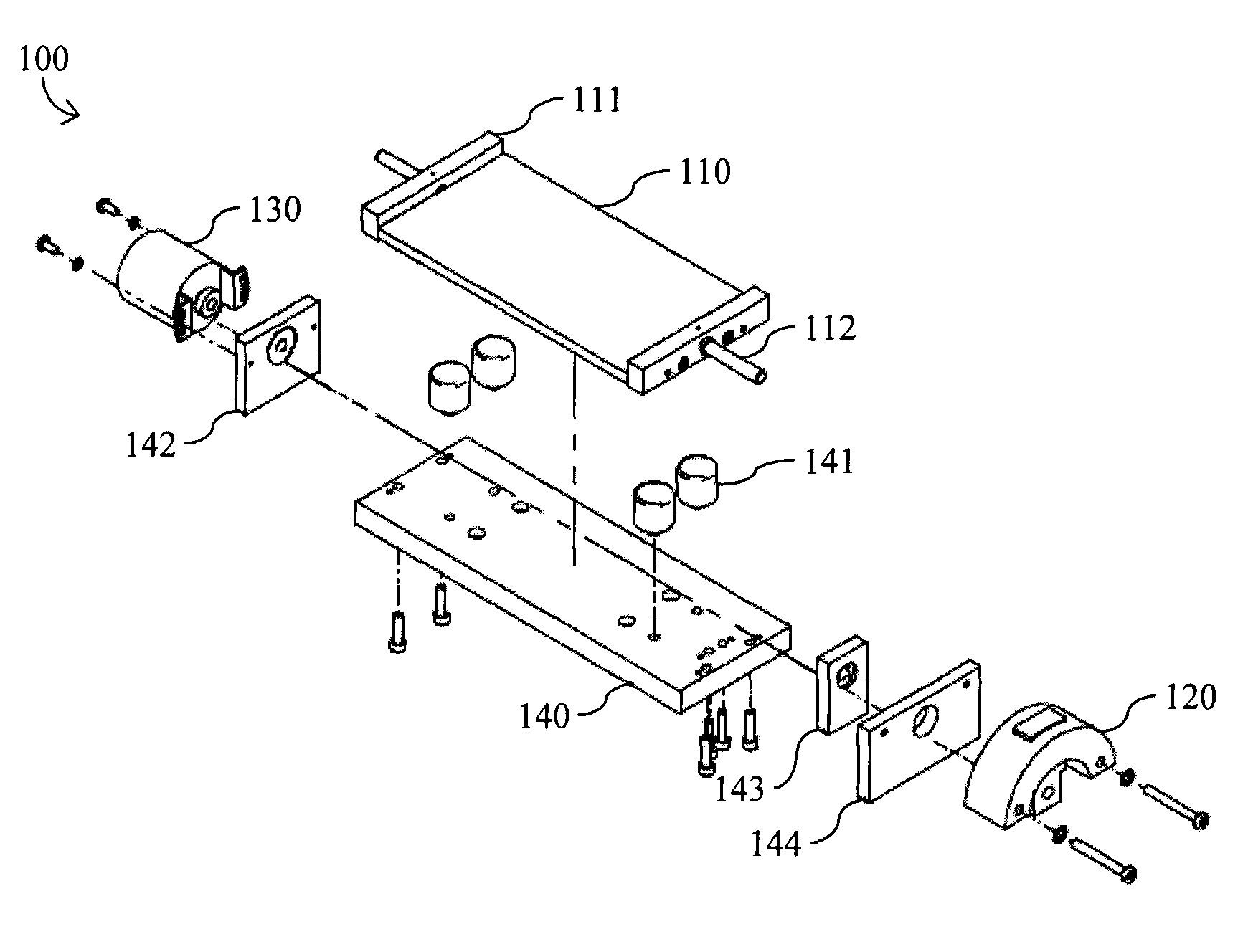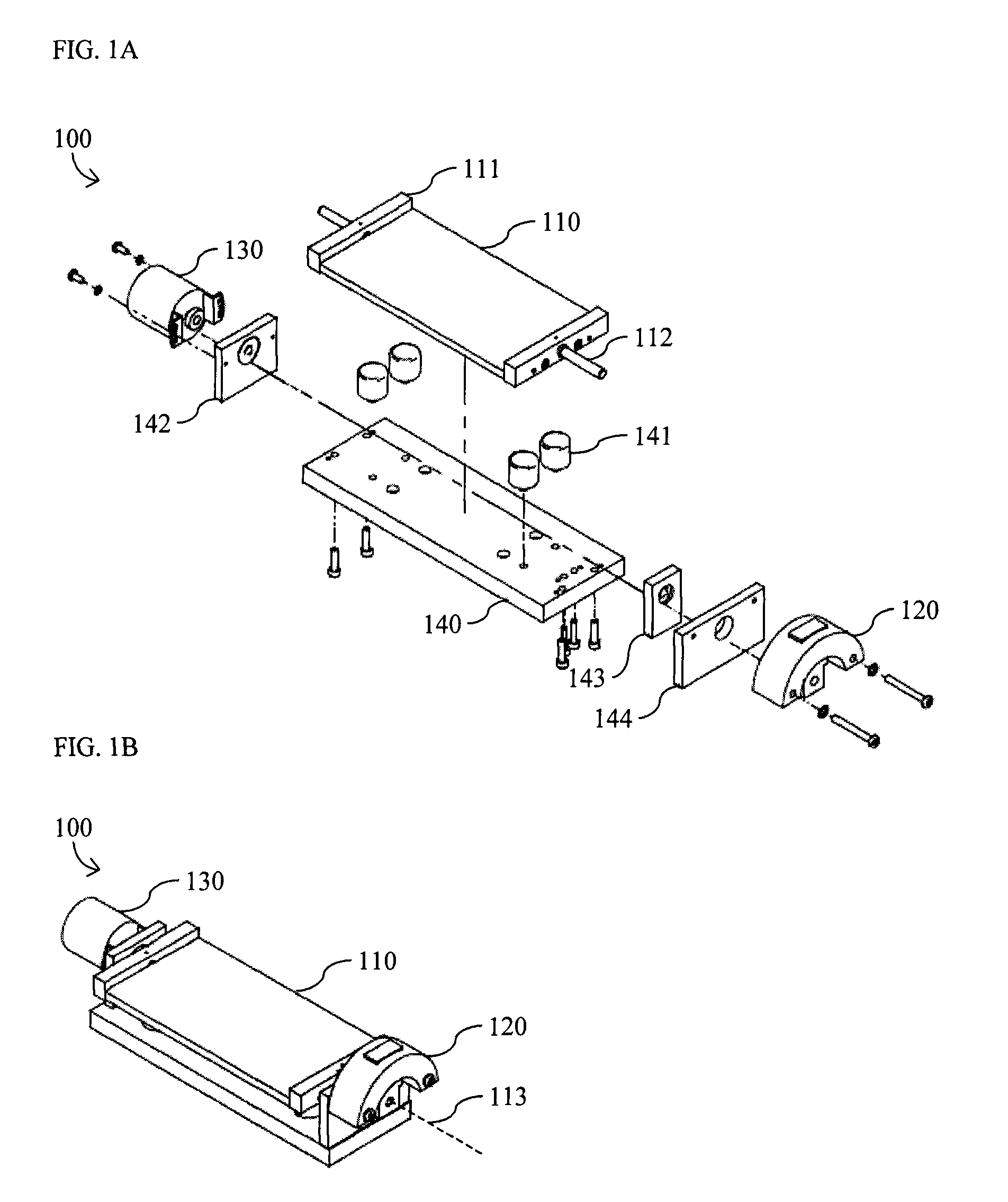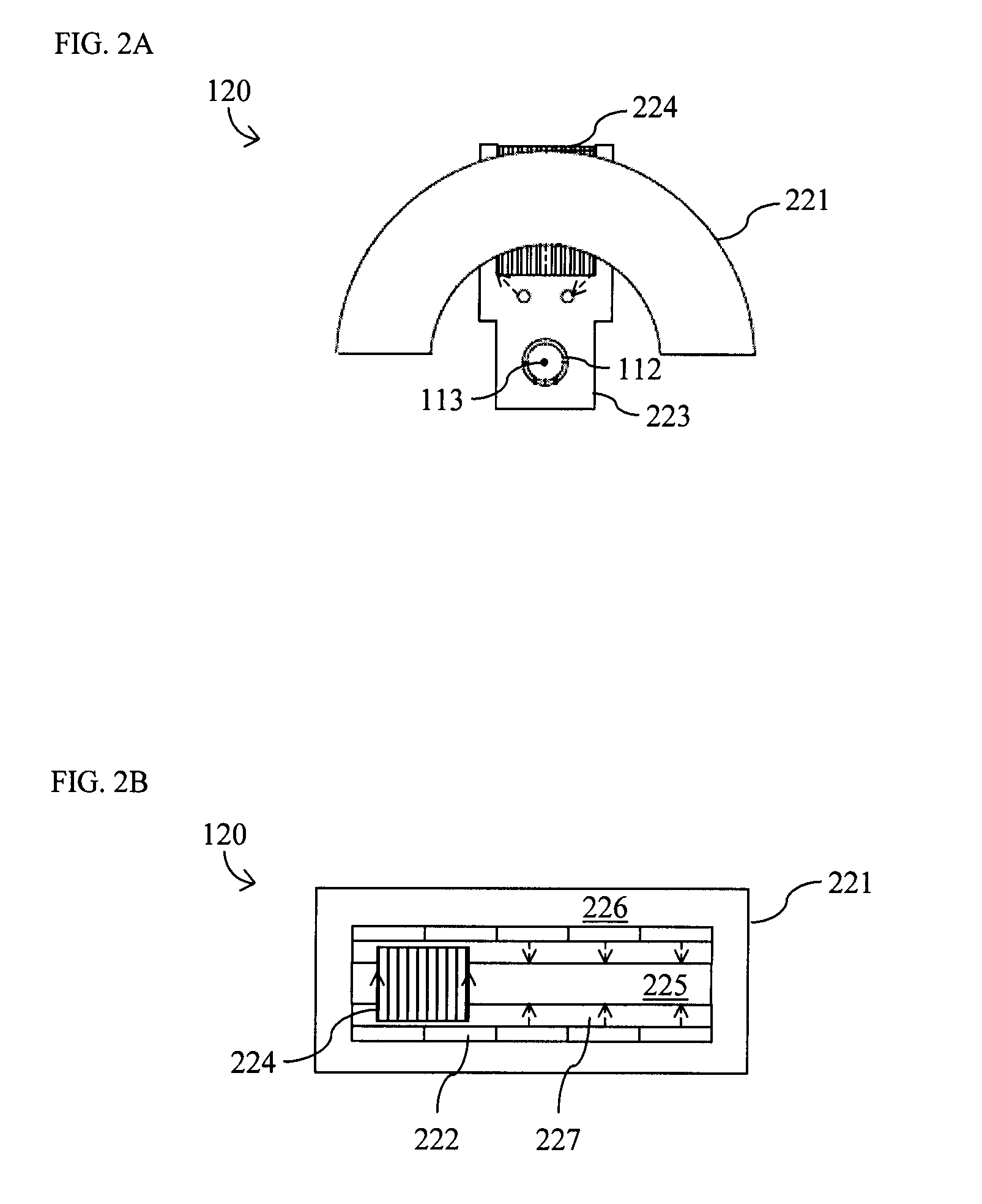Scanning system for lidar
a lidar and scanning system technology, applied in the field of scanning systems, can solve the problems of image distortion, conventional nodding mirror system, and inability to accurately detect the position of the polygonal mirror,
- Summary
- Abstract
- Description
- Claims
- Application Information
AI Technical Summary
Benefits of technology
Problems solved by technology
Method used
Image
Examples
Embodiment Construction
Scanning System for Lidar Including an Optimized Nodding-Mirror System
[0030]With reference to FIGS. 1A and 1B, the present invention provides a scanning system for lidar including an optimized nodding-mirror system 100. The nodding-mirror system 100 includes a nodding mirror 110, a rotary electromagnetic drive 120, a rotary optical encoder 130, and control circuitry (not shown). The nodding mirror 110 has a nodding axis 113 and a centered position. In the illustrated embodiment, the nodding mirror 110, which is approximately 200 mm long and 60 mm wide, is mounted on a mirror support 111 that includes a shaft 112, which coincides with the nodding axis 113 about which the nodding mirror 110 rotates. Preferably, the nodding mirror 110 is planar.
[0031]The nodding mirror 110 is coupled to both the rotary electromagnetic drive 120 and the rotary optical encoder 130 via the shaft 112. Preferably, the rotary electromagnetic drive 120 is coupled to the shaft 112 at one end of the nodding mir...
PUM
 Login to View More
Login to View More Abstract
Description
Claims
Application Information
 Login to View More
Login to View More - R&D
- Intellectual Property
- Life Sciences
- Materials
- Tech Scout
- Unparalleled Data Quality
- Higher Quality Content
- 60% Fewer Hallucinations
Browse by: Latest US Patents, China's latest patents, Technical Efficacy Thesaurus, Application Domain, Technology Topic, Popular Technical Reports.
© 2025 PatSnap. All rights reserved.Legal|Privacy policy|Modern Slavery Act Transparency Statement|Sitemap|About US| Contact US: help@patsnap.com



